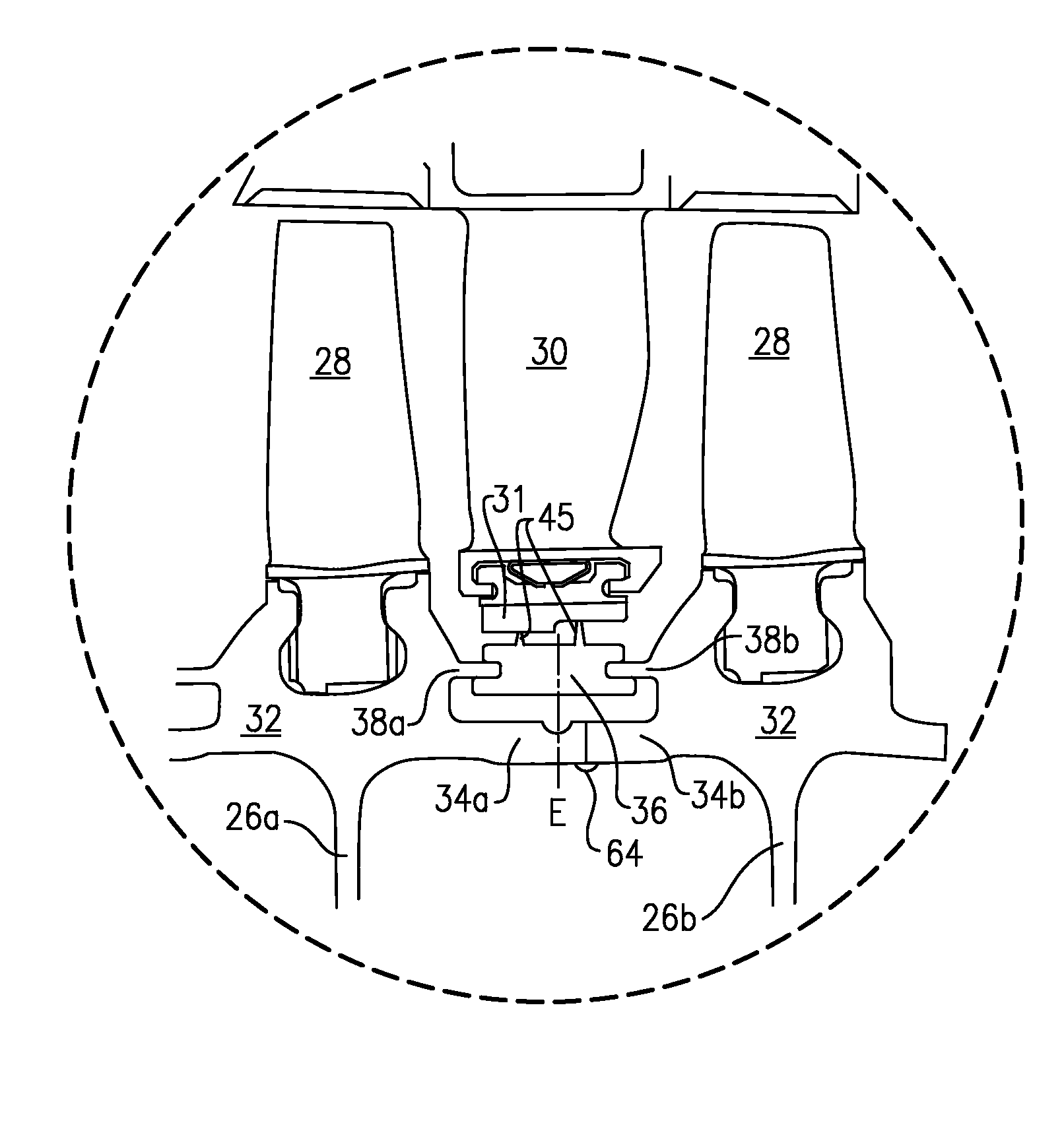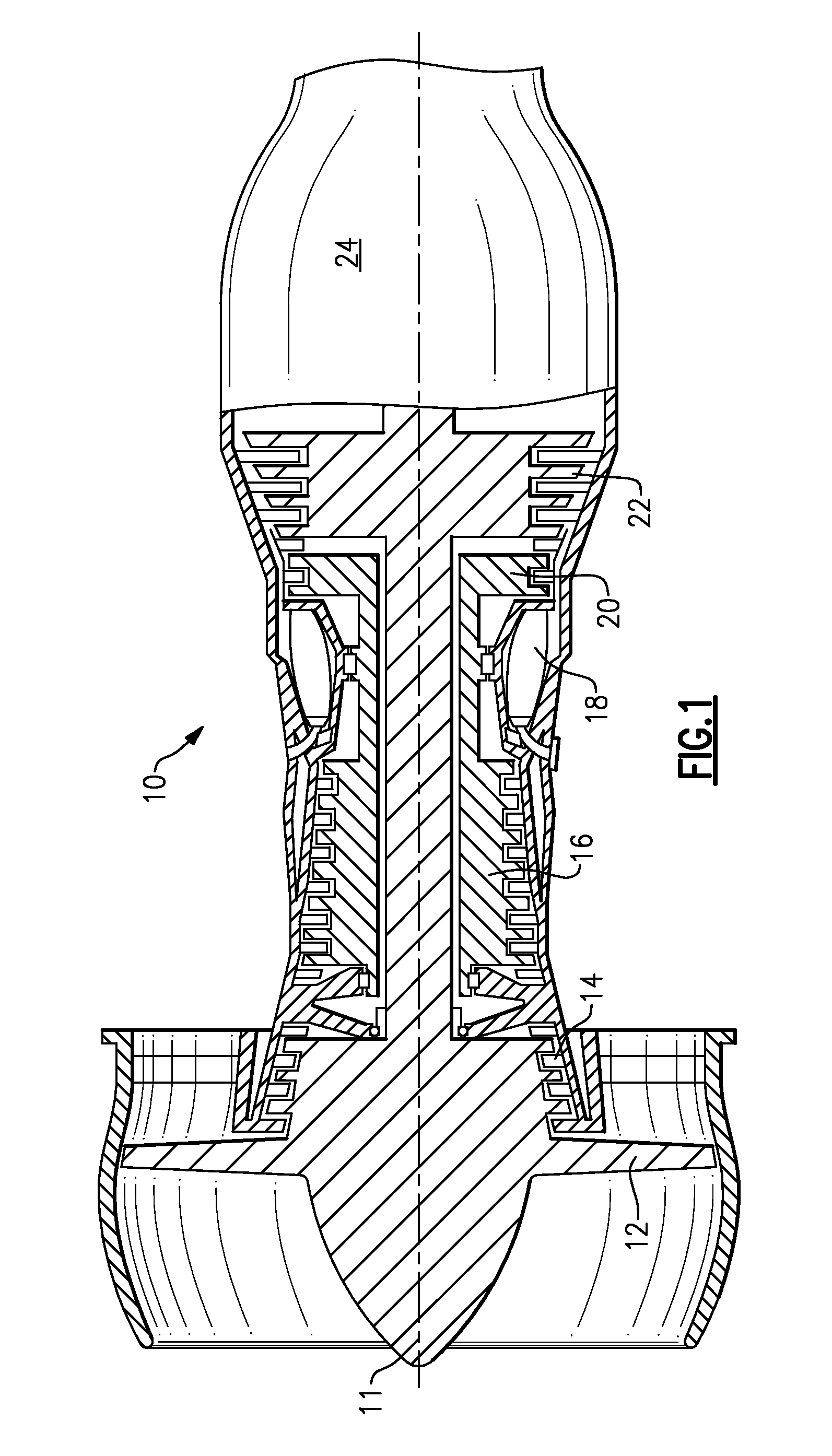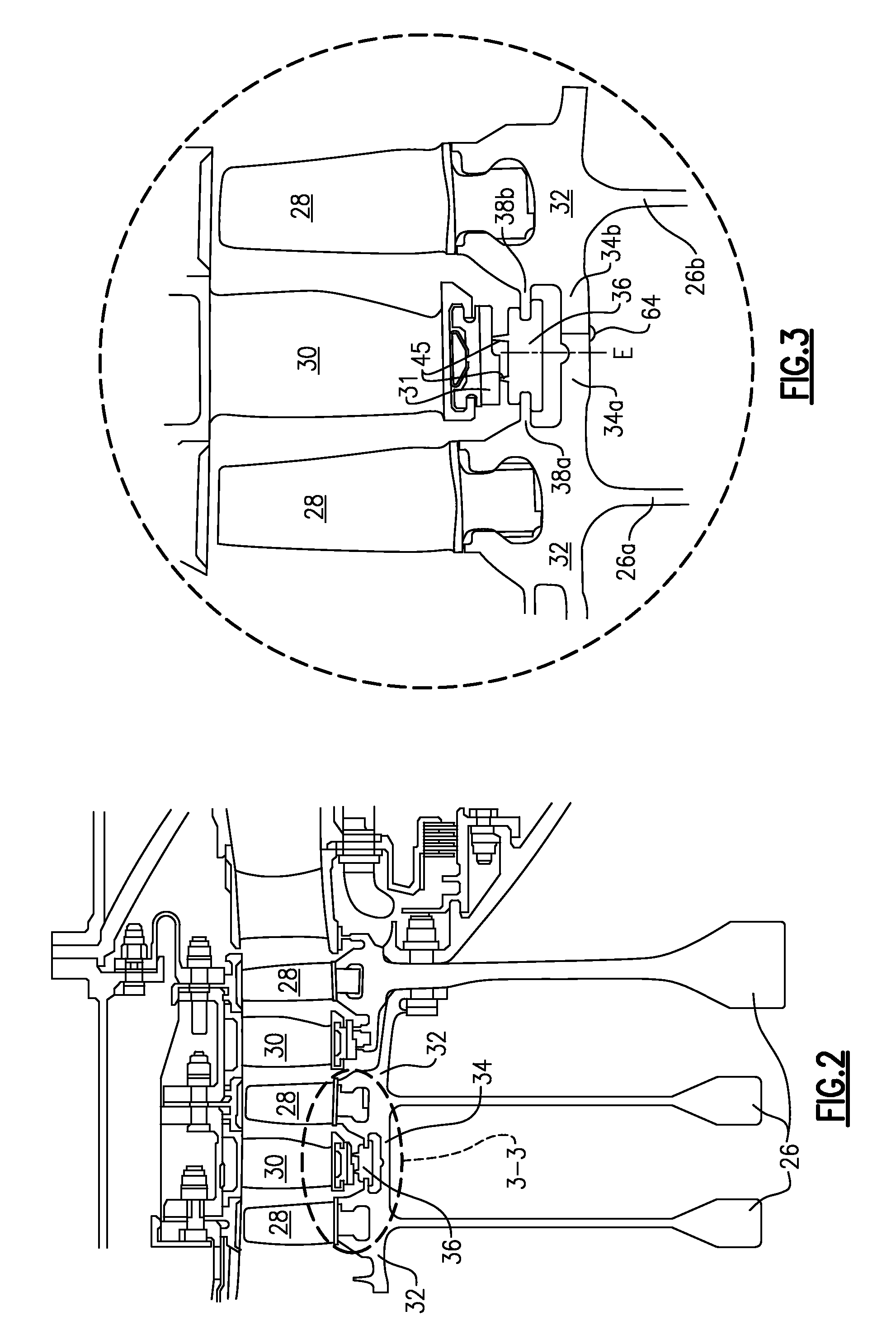Interlocking knife edge seals
a technology of interlocking and sealing edges, which is applied in the direction of machines/engines, manufacturing tools, liquid fuel engines, etc., can solve the problems of concentrated stress on the outer portion of the disk, compressive and tensile hoop stresses on the knife edge seal, and areas of concentrated stress are prone to cracking, so as to limit the recirculation of air and prevent air leakage
- Summary
- Abstract
- Description
- Claims
- Application Information
AI Technical Summary
Benefits of technology
Problems solved by technology
Method used
Image
Examples
Embodiment Construction
[0018]FIG. 1 is a schematic view of a turbine engine 10. Air is pulled into the turbine engine 10 by a fan 12 and flows through a low pressure compressor 14 and a high pressure compressor 16. Fuel is mixed with the oxygen and combustion occurs within the combustor 18. Exhaust from combustion flows through a high pressure turbine 20 and a low pressure turbine 22 prior to leaving the engine through the exhaust nozzle 24.
[0019]FIG. 2 illustrates a portion of a cross-section of a typical compressor including multiple disks 26 defining a compressor rotor. Each disk 26 rotates about an axis located along the centerline 11 of the turbine engine 10. A plurality of rotor blades 28 are mounted about the circumference of each of the disks 26. A plurality of stator blades 30 extend between the rotor blades 28 of axially adjacent disks 26, as shown.
[0020]Each disk 26 includes a disk rim 32. The disk rim 32 supports the rotor blades 28. A disk backbone 34 extends from each disk rim 32. A knife ed...
PUM
| Property | Measurement | Unit |
|---|---|---|
| circumference | aaaaa | aaaaa |
| radial distances | aaaaa | aaaaa |
| pressure | aaaaa | aaaaa |
Abstract
Description
Claims
Application Information
 Login to View More
Login to View More - R&D
- Intellectual Property
- Life Sciences
- Materials
- Tech Scout
- Unparalleled Data Quality
- Higher Quality Content
- 60% Fewer Hallucinations
Browse by: Latest US Patents, China's latest patents, Technical Efficacy Thesaurus, Application Domain, Technology Topic, Popular Technical Reports.
© 2025 PatSnap. All rights reserved.Legal|Privacy policy|Modern Slavery Act Transparency Statement|Sitemap|About US| Contact US: help@patsnap.com



